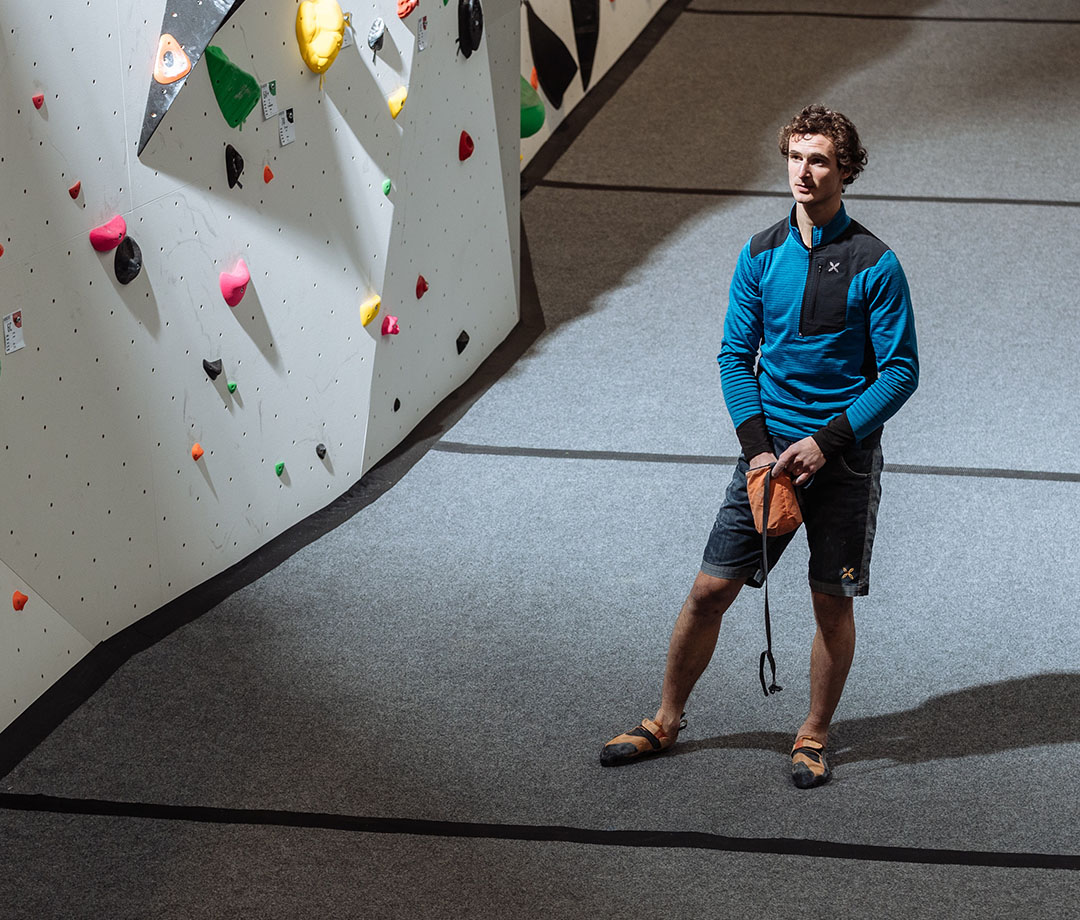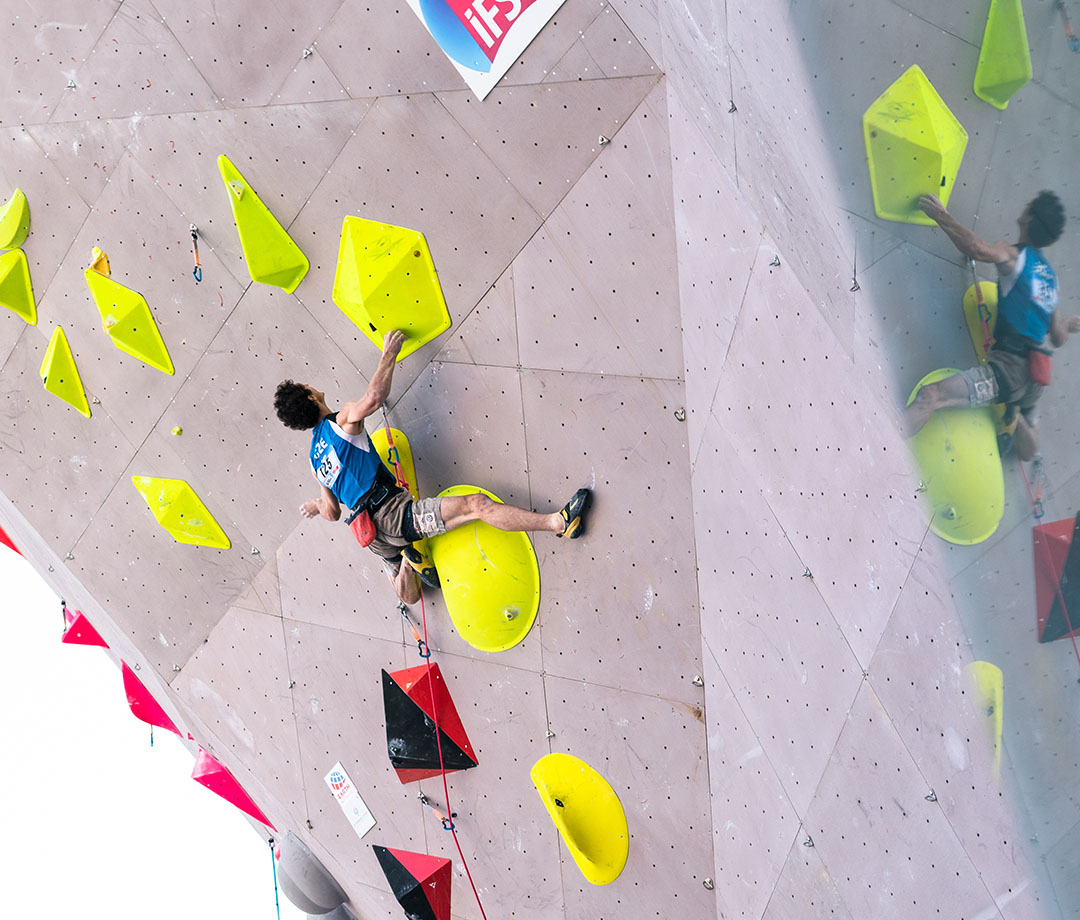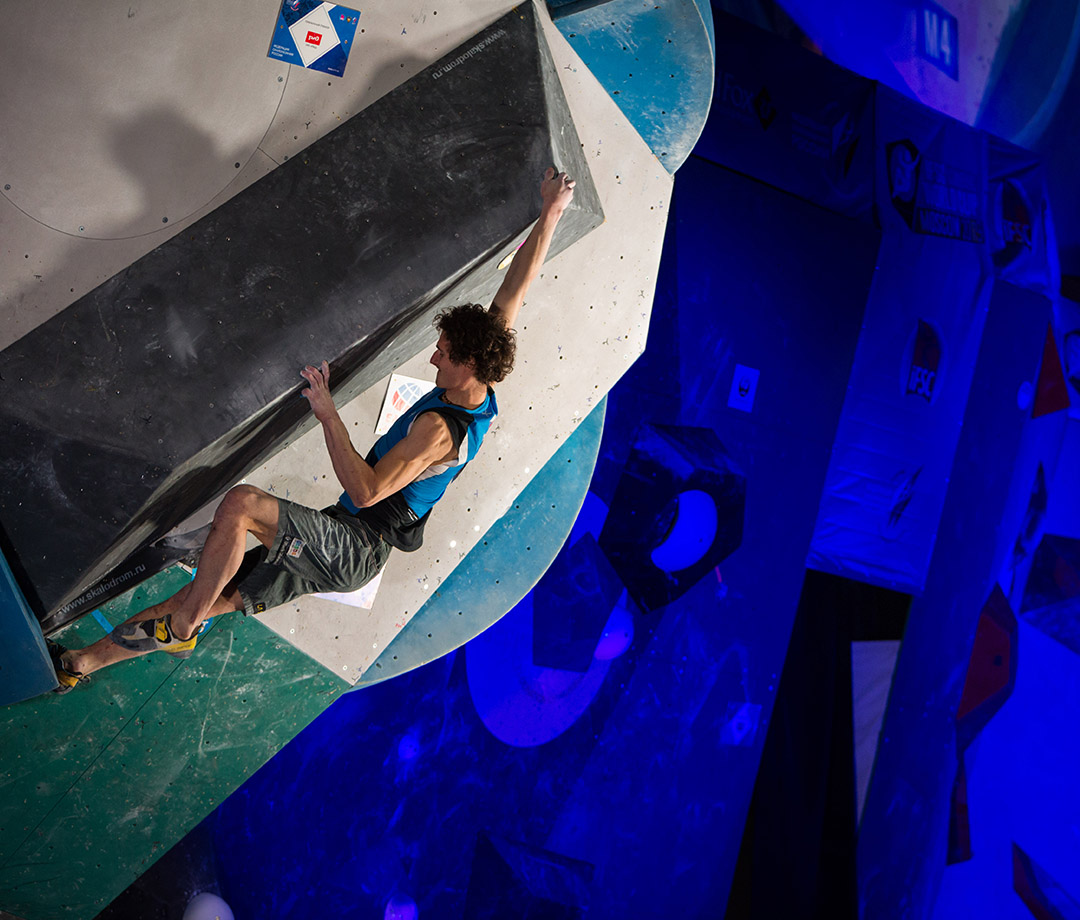When rock climbing debuts at the 2020 Olympic Games in Tokyo, it will likely be remembered as the watershed moment of a once-fringe activity gone mainstream. Undoubtedly, the sport has experienced a surge in popularity over the past few years, with films like Free Solo and The Dawn Wall helping to broaden the appeal as climbing gyms pop up around the country, but Tokyo will officially put it on the map. Whether you’re a climber or not, it’s going to make for spectacular television—from a heavily debated format that will consist of three separate disciplines (lead climbing, bouldering, and speed climbing) to the freakish athleticism of climbers like Slovenian phenom Janja Garnbret and Bavarian powerhouse Alex Megos. But no matter who stands atop the podium in July, perhaps the greatest spectacle that viewers will be treated to is the brilliance of Adam Ondra.
Tommy Caldwell Talks Record-breaking El Capitan Nose Climb
As rock climbing transitions into the limelight, this 26-year-old Czech professional climber is the torchbearer redefining what’s possible in the sport today. To put his dominance into perspective, consider this: In 2012, Ondra finished a route named Change in Hanshelleren Cave in Flatanger, Norway, and suggested it was the most difficult route ever climbed when he proposed the grade of 5.15c on the Yosemite Decimal System. (Editor’s note: The grade hasn’t been confirmed because no one else has completed it.) More recently, he returned to Hanshelleren Cave in 2017 and made history when he topped out on Silence, the world’s hardest sport climb with a proposed grade of 5.15d, which is also yet to see a second ascent.
The World’s Tallest Climbing Wall Is Opening This Month in Abu Dhabi
Taking his skill set indoors, however, has required Ondra to adopt an entirely different training regimen, as he’s largely stayed away from the competition circuit since 2015. Complicating matters further, like most other lead climbers and boulderers, he has virtually no prior experience in speed climbing.
Recently, we caught up with Ondra to learn about how the world’s greatest rock climber is preparing his mind and body for the Olympic stage.

What’s your training regimen like for the Olympics, and how does it differ from training for an outdoor project like Silence?
When I was training for Silence, I was training very specifically for that project. It was crucial to combine training on rock with training in the gym. I was training for the endurance it required and also for power in the very specific kinds of handholds and footholds and body positions that I needed. For the Olympics, I’m mostly training in the gym, so I’m running laps on the standard speed wall. I’m training on the bouldering wall. Also, another difference is that bouldering in the competitions has changed a lot in the last few years in terms of style. It’s very different from what bouldering is like on real rock. It’s much more dynamic and coordination-demanding. Bouldering on real rock, which I’m more used to climbing on, is a lot more static and requires mostly finger power, whereas competition-style boulder problems are about coordination. For that, you just have to train in the gym. It doesn’t really help that much, in the short term, to train on real rock.
Climber Emily Harrington Is Recovering After a Bad Fall on El Capitan
How do you mentally prepare for the pressure of competition climbing, specifically when you’re performing on a stage as big as the Olympics?
The pressure in our sport is big. In lead climbing and bouldering, the routes are completely new and they’re set specifically for this competition. There are lots of decisions that we’re making and it’s very difficult to make a fast decision under such pressure. Dealing with this is definitely a big part of the game. One approach is trying to simulate competitions pretty much every time I’m training, but right before the competition it’s very important to do some kind of exercises, mostly based in yoga or meditation. That helps me to relax and be confident.
What’s your approach to diet and nutrition? Do you avoid certain foods?
This is very important to me. I’m currently on a diet that’s based on traditional Chinese medicine. My diet is mostly composed of whole-grain cereals, legumes, beans, lentils. Lots of cooked, baked, or steamed vegetables. Lots of spices like curcumin or cumin that help aid digestion. Some superfoods. Especially in the winter months, I’m avoiding raw vegetables and even most raw fruits. For meat, I eat mostly high-quality fish and chicken. Some other things that I’m definitely avoiding are white flour, dairy, and sugar. I think if you just avoid these three things, that’s a good start.

On your YouTube series Road to Tokyo, you recently shared that you basically coached yourself until you were 20 years old but that these days you’re coached by legendary climber Patxi Usobiaga. How does having a coach like Patxi change the way you train?
When I started with Patxi, I concentrated more on defining the periodization of training, like when you have to train at a higher volume or cut down the volume and only focus on the quality. Now, I generally train at a much higher volume until right before competitions and then it’s much less. Having a coach and, most importantly, someone that you can discuss your training program with, gives you lots of confidence. It’s not only you who developed the training program, which is basically like a tool that should take you from training to the competition in the best possible shape. Working with Patxi gives me the confidence that I’m training the right way.
Finally, There's a Climbing Helmet With MIPS Technology

What do you do on the morning of a competition? Do you have any type of special warmup ritual or foods that you eat?
After I wake up, I normally drink some black tea and do pranayama, a kind of yoga for relaxation. For breakfast, I usually have oatmeal, sometimes sweet and sometimes salted with vegetables. Then I just go for it. During the competition rounds, after lunch I really like doing yoga nidra, which helps me to be more relaxed just before the competition.
The Olympic format consists of one rest day between the qualifying and championship rounds. What’s your strategy for recovery and taking care of your body during the day off?
At the Olympics, I’ll definitely have my traditional Chinese doctor. He’ll take care of me based on my state, so I’ll just let him do his job. Other than that, I think on that particular day the most important thing is just to chill out and stay in the hotel room. Maybe go for a little walk, but walking around in Tokyo in 40°C [104°F] heat and high humidity could be really tiring. I don’t want to be too active because the final rounds will start the next day in the afternoon and there will be lots of time to get the body going.
During the bouldering and lead climbing rounds, competitors have to wait in an isolation area so they can’t see each other’s strategy while climbing. What do you do while you’re waiting for your turn? Do have any special techniques to stay calm and loose?
I try not to really think about the competition itself because I’m always putting pressure on myself when I’m training in order to perform at my very, very best. When I’m in the isolation area, I mostly just warm up the same way I would warm up for training. There are other competitors who I’m friends with, so there’s lots of chatting and just talking about random stuff. I really try to focus only like 15 minutes before I actually start climbing.
The post How Climbing Phenom Adam Ondra Is Training for the 2020 Tokyo Olympics appeared first on Men's Journal.
Comments are closed.